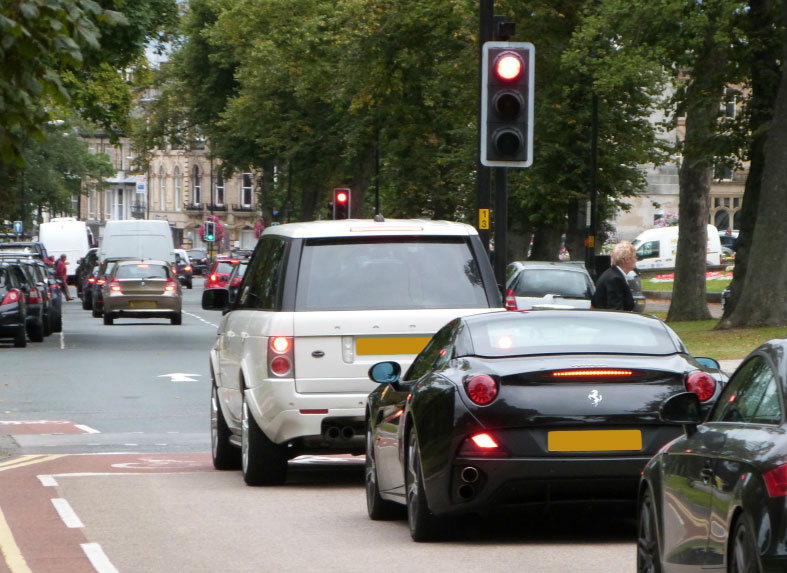
A Range Rover obstructing an ASL.
Source: The Peeky Rider. http://hedgehogcycling.co.uk/ 20th November 2013.
“I was crossing the road at the same time as a pretty, young, blonde girl to the pedestrian refuge in the middle, then to the other side, crossing two lanes of traffic each time. All the drivers stopped and waved us (her), across. When it’s just me, this doesn’t happen.
I watched an expensive Mercedes glide right into an Advanced Stop Zone reserved for cyclists, and come to a halt at the second line. Typical of a Mercedes driver, I thought. I’d think the same if it was a BMW. When you buy a BMW, I assume that as well as the standard DVLC vehicle registration document, you get a certificate of ownership of the road.
But are these are just my prejudices? There’s no data suggesting that drivers are more respectful to women, or that drivers of expensive cars take more liberties with the rules of the road, is there? A recent Headquarters psychology blog in the Guardian cites studies which suggest that my anecdotes are backed up by research.
A Californian study was reported by the New York Times. It looked at driver behaviour at a four-way junction where vehicles were expected to go in turn, and at a pedestrian crossing where drivers were required to allow pedestrians to cross. Over a period of a week, researchers noted which vehicles followed the rules, and which infringed them. They found that eight out of 10 cars did the right thing. Drivers of the lowest value cars (rated one on a scale of 1 to 5 by the researchers), never infringed during the survey; drivers of higher value cars were much more likely to do so. BMW drivers were the worst offenders.
The researchers also found that women were more likely to stop for pedestrians than men, and all drivers were more likely to stop for female pedestrians than for male pedestrians.
Another study reported by Headquarters shows that drivers more readily dehumanise other drivers and pedestrians, in ways they wouldn’t if interacting in person. This won’t surprise anyone. If two people get in each other’s way in a supermarket, usually they both apologise; on the Nidderdale Greenway, cyclists and pedestrians nearly always negotiate their way past each other in a friendly and polite way.
Something seems to happen to people when you put them in a metal box. Is it because drivers don’t always see the faces of other drivers, or pedestrians? Or is it that when we’re in cars, we think we’ll be able to drive away, and won’t have to explain, or face the consequences, of impolite or aggressive behaviour?
Another interesting aspect of the psychology of driving mentioned in the Headquarters blog is that we tend to drive less carefully and more aggressively when we’re alone, rather than with other people in the car. The study cited also shows that aggressive driving is more frequent in men, people under 45, and at rush hour.”
